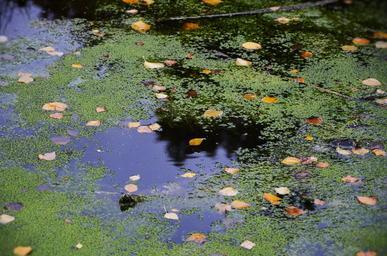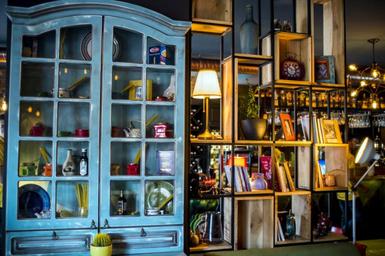Introduction
In the world of photography, self-portraits often serve as windows into a photographer’s soul. They can tell stories, evoke emotions, and express individuality in ways that traditional portraits may not achieve. Abstract self-portrait photography reaches beyond mere representation; it invites viewers into a realm of contemplation, creativity, and personal narrative. This article explores how one can craft a personal narrative through abstract self portraits, focusing on aesthetic self portrait photography and its role in self-expression.
Crafting a Personal Narrative Through Abstract Self Portraits
Crafting a personal narrative through abstract self portraits involves more than just snapping a photo; it requires introspection and an understanding of the deeper meanings behind imagery. Abstract self portrait photography allows artists to explore their identities in multifaceted ways—whether through color, composition, or context. By infusing their work with personal significance, photographers can create contemplative photos that resonate with themselves and their audience.
Understanding Abstract Self Portrait Photography
Abstract self portrait photography challenges conventional representations of identity. Unlike straightforward portrait photography, which captures recognizable features and expressions, abstract portraits prioritize emotion, mood, and concept over literal depiction. This approach encourages both the photographer and the viewer to engage with the image on multiple levels.
The Role of Emotion in Abstract Self Portraits
Emotions play a crucial role in shaping our narratives. When creating an abstract self portrait, consider what feelings you wish to convey. Is it joy? Melancholy? Anguish? Each emotion can guide your choice of colors, lighting, and framing to create an aesthetic that aligns with your intended message.
Color Theory in Aesthetic Self Portrait Photography
Color theory is foundational in art photography. Different colors evoke different feelings—warm tones might bring about comfort or passion while cooler tones can elicit calmness or sadness. By understanding how colors interact within your photos, you can craft a more compelling personal narrative that resonates deeply with viewers.

The Intersection of Identity and Art
Art has always been a medium for expressing identity. In today's fast-paced world where individuality often feels diluted by social media norms, abstract self-portraits offer an authentic avenue for exploration.
The Influence of Cultural Background on Self-Portraiture
One's cultural background can significantly influence artistic expression. For example, someone from a background rich in tradition might incorporate elements from their heritage into their abstract photographs—using props or settings that reflect their history.
Gender and Identity in Abstract Photography
Gender identity also profoundly impacts how individuals present themselves through art photography. Many contemporary photographers use abstraction to challenge stereotypes associated with gender roles—creating works that invite dialogue around identity politics.
Techniques for Creating Contemplative Photos
When it comes to crafting your own aesthetic photos wall or collection of contemplative photography pieces, various techniques can enhance your creative process:
Experiment with Angles: Changing your perspective can transform an ordinary scene into something extraordinary.
Use Props: Incorporating objects that hold personal significance adds layers to your narrative.
Play with Light: Natural light creates different moods throughout the day; consider shooting at dawn or dusk for dramatic effects.


Incorporate Movement: Blurring motion can evoke feelings of chaos or freedom depending on your subject matter.
Limit Your Palette: Using monochrome or analogous colors helps focus attention on form rather than color distraction.
Exploring Faceless Self Portrait Ideas
Faceless self portraits are an exciting avenue within this genre—allowing photographers to convey emotion without revealing facial features directly. This approach opens up endless possibilities for storytelling.
Using Silhouettes
Silhouettes create striking images where shape becomes the focal point rather than individual traits—a powerful way to communicate themes related to anonymity or universal experiences.
Body Language as Expression
Since facial features are omitted in faceless portraits, body language takes center stage; consider how posture conveys mood—an open stance may suggest confidence while closed-off positioning could imply vulnerability.
Aesthetic Colorful Portrait Photography Techniques
Incorporating vibrant colors into abstract self portraits can amplify emotional resonance and visual impact—especially when combined thoughtfully within compositions.
Creating Color Harmony
Color harmony refers to combinations that are pleasing together; utilizing complementary colors against one another creates tension while analogous colors invoke tranquility—think about how these dynamics play out within your photographs!
Utilizing Textures for Depth
Textures add richness! Layer fabrics or utilize natural elements like leaves to contrast against skin tones—they enhance tactile qualities which deepen narratives further still!
The Importance of Contextual Storytelling
Context plays an integral role when crafting narratives through art photography—it provides viewers insight into what fuels creativity behind each piece!
Setting as Character
Settings contribute significantly towards establishing mood; whether photographing amidst urban landscapes versus serene nature scenes influences perception dramatically!
Why Do Many Contemporary Printmakers Prefer Linocut Over Woodblock Printing?
Many contemporary printmakers gravitate toward linocut techniques due largely because they allow greater flexibility during production compared with traditional woodblock methods!
1) Linoleum is easier to carve than hardwood 2) It produces cleaner lines without splintering 3) Artists appreciate its affordability
This choice embodies innovation while preserving essential artistry—a potent metaphor reflecting evolving practices within modern photographic realms too!
Self Expression Through Abstract Portraits
Self-expression manifests uniquely across various mediums; similarly here lies opportunity for photographers willing brave authenticity!
1) Trust Your Instincts
Don’t shy away from experimenting! Listen closely when something speaks loudly inside even if unconventional choices arise…
2) Embrace Vulnerability
True artistry emerges when we’re unguarded—it’s okay showcasing raw emotions; this builds connection between creator/viewer alike fostering empathy!
FAQs
Q1: What is contemplative photography?
Contemplative photography focuses on mindfulness and being present during the act of taking pictures rather than just capturing scenes quickly—it emphasizes observation over documentation encouraging deeper connections between subjects photographed!
Q2: How do I hang large canvas artwork?
To hang large canvas pieces effectively ensure using appropriate hardware suitable for weight supported along walls! Consider eye-level placement allowing maximum visibility whilst avoiding overcrowding other decor items nearby…
Q3: What makes an aesthetic photo?
An aesthetic photo typically possesses visual appeal achieved through thoughtful composition including balanced elements such as color schemes lighting perspectives textures—all working harmoniously together evoking strong emotional responses among audiences viewing them!
Q4: What defines fine art photography?
Fine art photography prioritizes artistic vision over commercial intent! It aims expressively connect emotionally challenging viewers perceptions https://www.oskuleinonenphotography.com/Fine-Art-Photography reality while exploring concepts imagination creativity beyond mere documentation daily life events captured lens…
Q5: Are faceless self-portraits considered art?
Absolutely! Faceless selfies reject conventional portrayals inviting observers contemplate broader themes identity humanity without being confined physical appearance alone…
Q6: How do I start creating my own abstract self-portraits?
Begin by exploring what resonates personally! Identify emotions themes wish convey experiment freely approach incorporating unique styles techniques reflect individual narratives authentically—most importantly enjoy journey discovering insights along way!
Conclusion
Crafting a personal narrative through abstract self portraits offers artists profound opportunities for exploration and expression unlike any other medium available today! By embracing the principles outlined here—from engaging with emotion color theory context—you’ll discover new dimensions within yourself as well as potential connections forged amongst audience members drawn magnetic allure created visuals share world view experiences interpretations freely expressed through lens creativity! As you embark upon this journey remember there’s no single right path just keep seeking authenticity genuine exploration leading ultimately uncover deeper truths hidden waiting emerge beautifully crafted aesthetics evolve continuously unfolding richer narratives captured artistically forevermore…